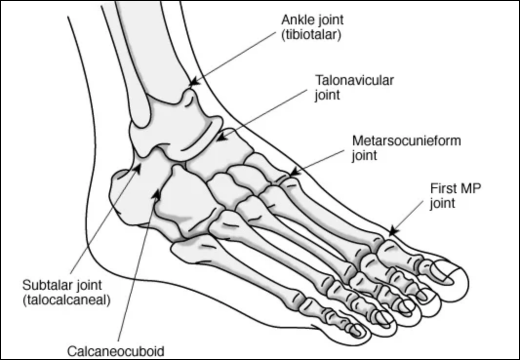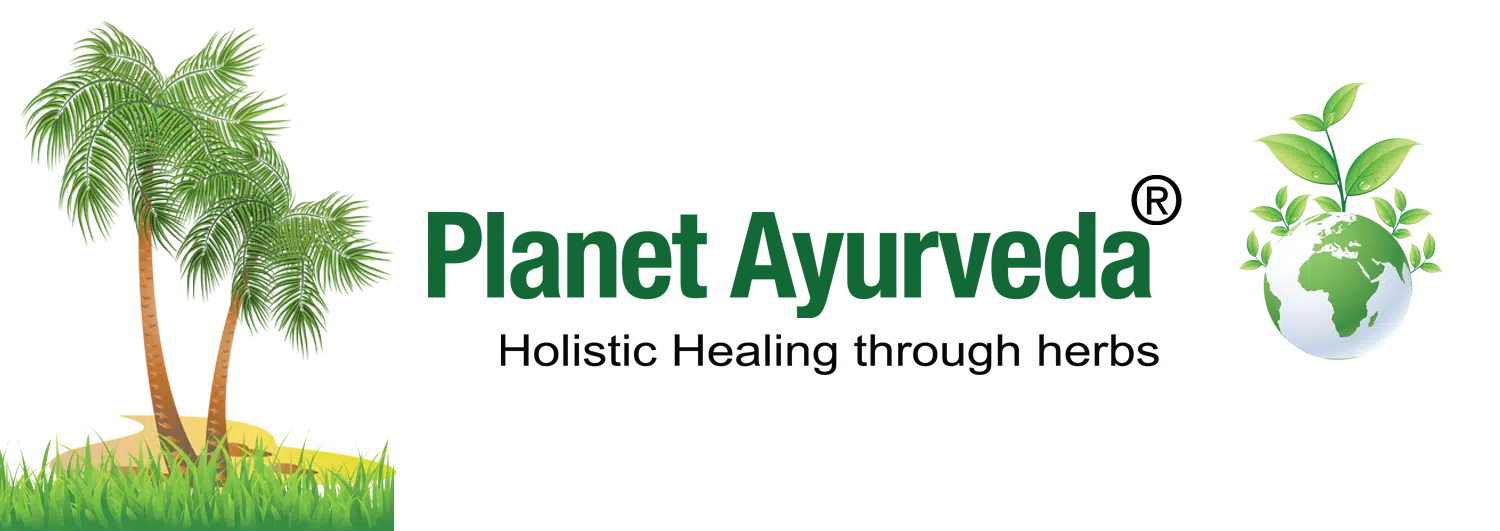Talonavicular Arthritis – Causes, Symptoms, Treatment & Herbal Remedies
Abstract
Your ankle and talonavicular joint are like dance partners in the grand performance of walking, running, and balancing. The talonavicular joint in your midfoot controls smooth side-to-side motion, while your ankle handles up-and-down movements. When arthritis hits the talonavicular joint, it’s like one dancer limping- the ankle has to pick up the slack. This can lead to extra stress, pain, instability, and even arthritis creeping into the ankle. Talonavicular arthritis is correlated to Sandhigata Vata (Osteoarthritis) of the foot in Ayurveda. Beyond the physical, there’s a mental toll: frustration, social limitations, and decreased independence. Even simple joys like a walk in the park or playing with children can feel impossible.

Introduction
The talonavicular joint, located in the midfoot, is a crucial articulation that contributes significantly to the foot’s mobility and adaptability, supporting smooth movement and balance during walking, running, and other weight-bearing activities. Any damage here doesn’t stay local, it disturbs the whole biomechanics of the foot, leading to midfoot collapse, deformities, and chronic pain. Talonavicular arthritis is a condition where the joint connecting the talus and navicular bones in the midfoot undergoes wear-and-tear or inflammation, leading to pain and reduced mobility. Talonavicular arthritis causes midfoot pain, swelling, and stiffness, often worsening with walking or standing. As the cartilage wears down, movements like inversion and eversion become restricted, and the medial arch may collapse, leading to flatfoot. These changes make it difficult to walk long distances, manage uneven surfaces, and find comfortable footwear, ultimately interfering with daily activities and quality of life.
Causes
There can be many factors responsible for it-
- Talus or navicular fractures can damage joint surfaces and cause arthritis.
- Dislocations of the Chopart joint (Transverse tarsal joint) may extend to and damage the talonavicular joint
- Abnormal leg alignment
- Weight gain
- Infection within the joint
- Aging and Overuse
- Pes Valgus Deformity (Flatfoot)
- Frequent Ankle sprains can damage the joint
- Autoimmune conditions like Rheumatoid Arthritis, Psoriatic Arthritis, Ankylosing spondylitis can lead to it
- Avascular Necrosis (Hampered blood supply to navicular or talus bone)
Symptoms
Common Symptoms
- Pain in the midfoot, worse with walking or standing
- Stiffness after rest or in the morning
- Inflammation in the joint
- Swelling and tenderness around the joint
- Warmth over the affected area
- Limited foot movement
- Limping due to pain and rigidity
Progressive Symptoms
- Persistent or worsening pain
- Difficulty walking on uneven ground
- Flatfoot deformity
- Grinding or popping sounds from cartilage loss
Diagnosis
Patient History & Examination
- Review of symptoms, medical and family history
- Check for pain, swelling, stiffness, limited motion, deformity, or abnormal gait
- Look for tenderness and sounds like clicking or grinding during movement
- X-ray: First choice to assess joint space, bone spurs, or deformity (often done weight-bearing)
- CT scan: Detailed bone evaluation.
- MRI: Useful for both bone and soft tissue issues, e.g., avascular necrosis.
- Blood tests (CBC, ESR, ANA, uric acid) to detect inflammation or rule out gout/autoimmune arthritis.
Treatment
Medications
- Painkillers- Nonsteroidal anti-inflammatory drugs (NSAIDs)- like ibuprofen or paracetamol can also be considered
- Steroid Injections- Corticosteroid injections to temporarily relieve inflammation and discomfort
Footwear and Orthotics
- Custom shoe inserts or rigid arch supports.
- Supportive shoes with firm soles are preferred.
Physical Therapy
To enhance joint mobility and strengthen ankle-foot muscles.
Activity Modification
Reducing or avoiding high-impact exercises and sports.
Assistive Devices
A cane, walking boot, or other supportive device.
Surgical Options
Talonavicular Arthrodesis (Fusion) and Arthroscopic Fusion. But, it may not be a good choice as it can lead to complications in future.
Ayurvedic Overview
Ayurveda has fundamental bioenergies called Vata, Pitta and Kapha. Vata is the master dosha, that is, it commands the movement of Pitta and Kapha doshas as well. In Ayurveda, Shoola (Pain) anywhere in the body implies aggravated Vata dosha (Biological energy representing movement). This shloka (Sanskrit text) below by Acharya Sharangdhara tells about the importance and influence of Vata in our body-
वायुना हि यत्र नियन्ते तत्र गच्छन्ति मेघवत्||
It says that Pitta, Kapha, the malas (waste products), and dhatus (tissues) are all inactive without Vata. Just as winds carry clouds, Vata (the energy of movement) dictates the location and activity of all other bodily components, including Pitta and Kapha, making Vata the primary controller of bodily functions.
When this aggravated Vata dosha resides in the joints, it is called Sandhigata Vata (Osteoarthritis/Vata related joint disorder). Talonavicular arthritis too can be correlated to Sandhigata Vata (Osteoarthritis) affecting the foot. In Chraka Samhita, Sandhigata Vata (Osteoarthritis) is explained in the shloka (Sanskrit text) below-
प्रसारणाकुञ्चनयोः प्रवृत्तिश्च सवेदना ||
This translates to when Vata dosha becomes imbalanced and accumulates in the joints, it causes a sensation of air or movement within the joint (crepitus), accompanied by swelling and pain during bending and straightening of the joint.
When the person, particularly of Vata predominant prakriti (Body type), indulges in factors/habits like consuming Ruksha (dry), Sheeta (cold), Visham ahaara (unwholesome foods), skipping meals, Shrama (overexertion or lack of rest), Vegavidharana (Suppression of natural urges like micturition etc), and is constantly feeling emotions like anxiety, fear, worry, or stress, Vata dosha aggravates. Imbalanced Vata disturbs the Agni (Digestive fire) and also moves around until it finally resides in Sandhi (Joint) of foot due to presence of Kha-Vaigunya (Empty space) there. Then it causes disability/abnormality in Sandhi (Joint), related structures like Kandra (Tendons) and Snayu (Ligaments) as well. The person experiences symptoms like Guruta (Heaviness) in joint, Shotha (Inflammation) in joint, pain during the movement of joint, Shabda (Crepitus) during walking or movement of joint and also deformity of joint.
Being a Vata-related disorder, the line of treatment in Ayurveda is bringing Vata dosha in its balanced state. Basti Karma (Therapeutic enema) is the best treatment for Vata, if we talk about the role of Panchkarma (5 detoxifying therapies) in Talonavicular arthritis. Local Abhyanga (Therapeutic massage) using medicated oils like Saindhavdi taila, Rasna taila, Prasarini Taila is also beneficial in relieving pain and stiffness. If Nadi Swedana (Fomentation therapy using a pipe) using herbal decoctions is administered after Abhyanga, great results are seen in Sandhigata Vata (osteoarthritis). If we talk about classical formulations for Talonavicular arthritis, Tryodashang Guggul, Rasnadi Guggul, Yograj Guggul, Vatavidhwansak Ras, Dashmoolarishta and Rasnasaptak Kwatha can be used to provide relief. Herbs like Shallaki (Boswellia serrata), Haridra (Curcuma longa), Hadjod (Cissus quadrangularis), Shigru (Moringa oleifera), Guggul (Commiphora mukul) etc. are extremely beneficial in joint disorders.
Dietary Habits And Lifestyle Modifications
- Follow diet- Include warm, cooked foods such as whole grains (wheat, oats), ghee, sesame oil, and milk, properly cooked green leafy vegetables, nuts and seeds (almonds, walnuts, sesame seeds), and spices like ginger, turmeric, garlic, cumin, and ajwain. Herbal beverages like ginger tea or Dashmool decoction can also be beneficial.
- Avoid diet- Refrain from dry, cold, or raw foods, excessive legumes such as rajma, chana, or peas, overly bitter or astringent foods, and limit tea, coffee, and alcohol.
- Water intake- Adequate hydration should be maintained. 2.5-3 litres of water per day.
- Yogasana- Mountain Pose (Tadasana) and Easy Pose (Sukhasana).
- Physical exercises- Perform gentle foot and ankle exercises, such as tracing the alphabet with your toes or rolling a tennis ball under the foot for massage.
Herbal Remedies For Talonavicular Arthritis By Planet Ayurveda
Planet Ayurveda is a globally recognized Ayurvedic wellness brand dedicated to reviving the ancient science of Ayurveda with modern precision. Founded and guided by renowned Ayurvedic experts, it offers a wide range of authentic herbal supplements, classical formulations, and personalized wellness solutions. Planet Ayurveda is committed to holistic healing, addressing the root cause of diseases, and promoting balance of body, mind, and spirit.
For Talonavicular Arthritis, we have the following medications-
- Bone Support
- Coral Calcium Complex
- Boswellia + Curcumin
- Yograj Guggul
- Orthovita Oil
Product Description
1. Bone Support
These capsules are made from key ingredients like Shudh Laksha (Laccifer lacca), Suhanjana Beej (Moringa oleifera) and Hadjod (Cissus quadrangularis). These capsules balances Vata, Pitta and Kapha doshas. They are rich in calcium, phosphorus, flavonoids and due to their Sandhaneeya (Union-promoting), Ropana (Healing), Shothhara (Anti-inflammatory) and Vedanasthapan (Analgesic) properties, they support structural repair and functional recovery.
Dosage- 1 capsule twice daily.
1. Bone Support
These capsules are made from key ingredients like Shudh Laksha (Laccifer lacca), Suhanjana Beej (Moringa oleifera) and Hadjod (Cissus quadrangularis). These capsules balances Vata, Pitta and Kapha doshas. They are rich in calcium, phosphorus, flavonoids and due to their Sandhaneeya (Union-promoting), Ropana (Healing), Shothhara (Anti-inflammatory) and Vedanasthapan (Analgesic) properties, they support structural repair and functional recovery.
Dosage- 1 capsule twice daily.
2. Coral Calcium Complex
These capsules contain different compounds like Praval Pishti (Coral calyx), Mukta Pishti (Pearl calyx) and Giloy (Tinosporia cordifolia). They pacify Vata and Pitta doshas. Rich in bioavailable calcium, and their immunomodulatory action due to Giloy (Tinospora cordifolia), these capsules reduce aggravation of symptoms, improves microcirculation in joint structures, support healing, flexibility and prevent further degeneration of cartilage in the talonavicular joint.
Dosage- 1 capsule twice daily.
3. Boswellia + Curcumin
These capsules contain Shallaki (Boswellia serrata) and Curcumin (Curcumin longa). These capsules balance Vata and Kapha dosha. Boswellic acids in Shallaki reduce joint pain and swelling by inhibiting inflammatory mediators. Curcumin removes Ama (Metabolic toxins), and prevents further degeneration with its Rasayana (rejuvenative) effect.
Dosage- 1 capsule twice daily.
4. Yograj Guggul
These tablets contain key ingredients like Guggul (Commiphora mukul), Musta (Cyperus rotundus) and Chitrak (Plumbago zeylanica). These tablets primarily balance Vata- Kapha doshas. Rich in guggulsterones, plumbagin, cyperene etc. they show anti-inflammatory, analgesic, and anti-rheumatic actions.
Dosage- 2 tablets twice daily.
5. Orthovita Oil
This oil is made from a combination of oils like Saindhavadi taila, Shulagajendra oil, Prasarini oil etc. It mainly balances aggravated Vata dosha, so it helps in relieving pain and inflammation symptoms in Talonavicular Arthritis. It reduces muscle stiffness and soreness, supports healthy joint function and mobility and provides a soothing effect on affected areas.
Dosage- For local application.
Conclusion
Talonavicular arthritis, a Vata-dominant joint disorder, significantly impacts mobility, daily activities, and quality of life due to pain, stiffness, and deformity. Ayurvedic understanding correlates this condition to Sandhigata Vata, emphasizing the role of aggravated Vata in joints. Effective management focuses on balancing Vata through therapies like Basti, Abhyanga, and Nadi Swedana, alongside classical herbal formulations such as Yogaraja Guggul, Rasnadi Guggul, Dashmoolarishta, and Rasnasaptak Kwatha. Supportive diet, lifestyle modifications, gentle exercises, and yogasanas further enhance joint health. Integrating these Ayurvedic approaches provides a holistic, natural, and long-term solution for relieving pain and improving mobility in talonavicular arthritis. It is extremely important to consult an Ayurvedic physician for right guidance and treatment, if you are suffering from this.




